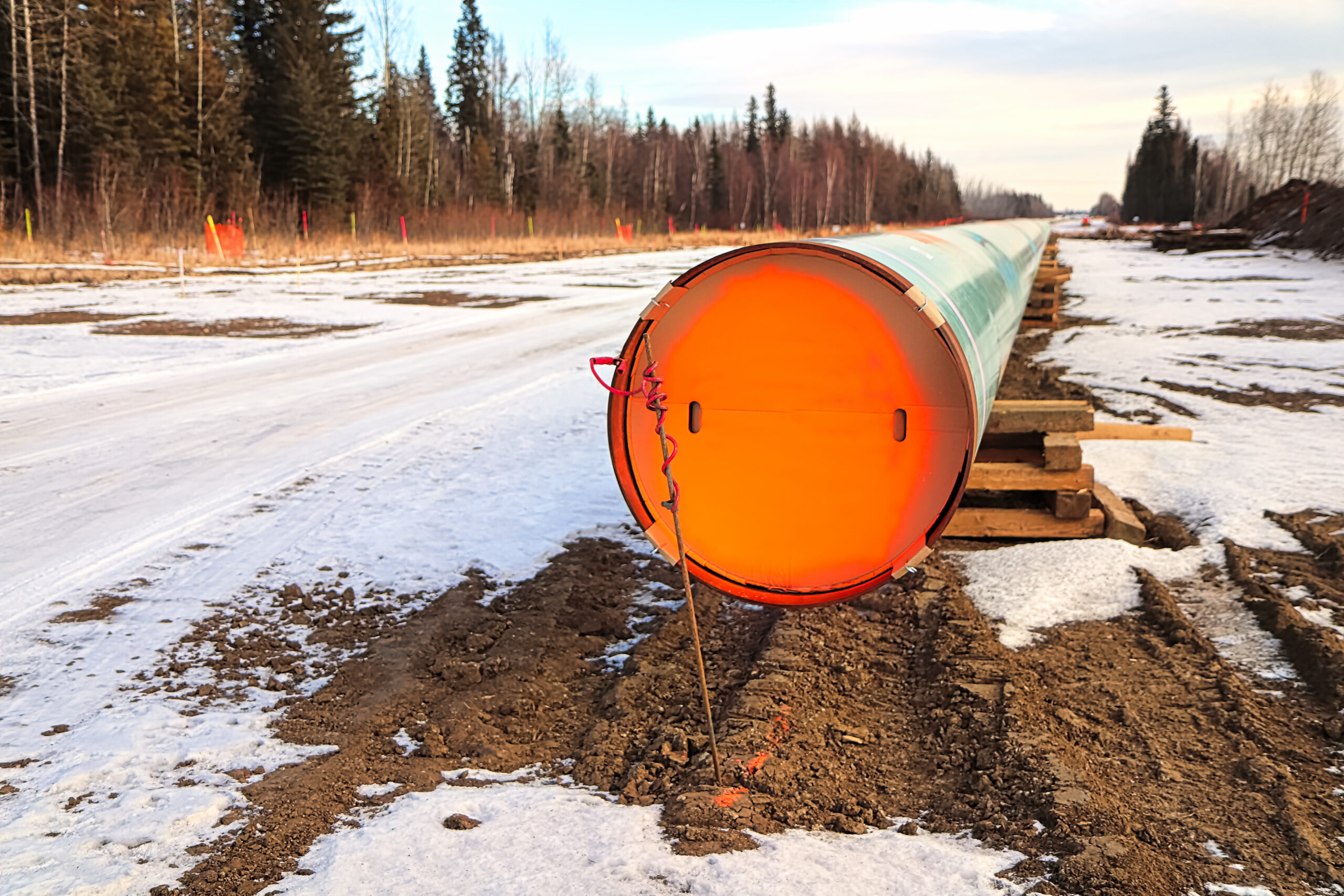Keystone pipeline spills oil in Kansas
The Keystone spill in Kansas is the latest in a history of accidents for the beleaguered pipeline.

The high-profile long-distance Keystone oil pipeline ruptured and spilled thousands of barrels of oil into a creek in Kansas, shuttering the line and injecting some uncertainty into regional oil markets.
On December 7, TC Energy’s Keystone pipeline spilled an estimated 14,000 barrels of oil in Washington County, Kansas. Aerial footage from Nebraska Public Media shows farm land streaked with black crude.
The Keystone pipeline carries Canadian oil from Alberta to refineries in the U.S. Midwest. It also connects into a broader pipeline network that runs all the way to the Gulf Coast. The system is likely more familiar to the general public for the now-defunct Keystone XL project, a proposed expansion that would have carved a new route from Alberta to Nebraska. That project was delayed for years and ultimately cancelled by President Biden on his first day in office.
But the existing pipeline is a major conduit ferrying Canadian oil to American energy markets.
Officials in Kansas said the Keystone pipeline cleanup could take a while. “They told us they expected to be here for several more weeks,” said Randy Hubbard, Washington County’s emergency management coordinator, after meeting with TC Energy, according to Reuters. “They didn’t qualify what that is.”
In a statement on the day of the spill, TC Energy said: “The affected segment has been isolated and we have contained downstream migration of the release. Our estimated release volume is 14,000 barrels. Our primary focus right now is the health and safety of onsite staff and personnel, the surrounding community and mitigating risk to the environment.” The company said it has 250 people working on a response to the spill.
The pipeline has a poor track record with a history of spills large and small. The Keystone pipeline has now leaked more oil on U.S. land than any other pipeline in the country in the past 12 years. The latest spill, combined with other leaks from the same pipeline in recent years, total a combined 26,000 barrels of oil spilled since 2010, more than any other pipeline, according to Bloomberg Green.
“Sadly, most know it is never a question of if the pipeline would leak, but when and how bad. I’d guess most didn’t anticipate Keystone’s next spill to be this big,” Zack Pistora, a Kansas lobbyist with the Sierra Club, told Gas Outlook.
A U.S. government report from last year documented the problematic history of the Keystone pipeline.
“Keystone’s accident history has been similar to other crude oil pipelines since 2010, but the severity of spills has worsened in recent years,” a 2021 report from the U.S. Government Accountability Office (GAO) stated. Prior to the latest spill, the Keystone pipeline had 22 accidents since 2010.
The investigations into several previous spills by TC Energy reveal that problems with four major accidents were “caused by issues related to the original design, manufacturing of the pipe, or construction of the pipeline,” the GAO report said.
Pistora warned that these problems are not going away. “Sustained pipeline pressure, continued corrosion, and environmental changes over time can only make these design, material, or installation problems worse and more frequent,” he said.
Market disruptions
The interruption of oil flowing through the pipeline is starting to impact the market.
“Oil prices are rising today for the second day in a row because the Keystone pipeline in the US remains closed following a leak and it is still unclear when it will be able to go back into operation,” Commerzbank said in a December 13 note to clients. The pipeline carries roughly 620,000 barrels of oil per day. “Crude oil stocks at Cushing, the delivery point for WTI, could decline as a result,” the bank said, referring to the prominent benchmark price for U.S. crude oil.
Other analysts agreed. “Keystone Pipeline repair appears to be taking longer than expected in upping the possibility of further stock draws at Cushing,” said Jim Ritterbusch at Ritterbusch and Associates, according to Reuters.
At the other end of the pipeline, back upstream in Canada, there is now less space to pump the oil away, resulting in a volume of oil that is temporarily trapped in the region. Western Canada Select (WCS), a benchmark price for heavy oil in Alberta, is trading at a wider discount relative to the U.S. WTI price. Prior to the spill, WCS traded for $27.50 per barrel less than WTI; the day after the rupture, WCS traded for $33.50 less.
Analysts noted that the outage could benefit other heavy oil producers, such as those from Mexico and Colombia.
A prior spill from the Keystone pipeline in 2017, which dumped 5,000 barrels of oil onto the ground in South Dakota, also resulted in market disruptions.
That spill also fueled intense opposition to the proposed Keystone XL pipeline, which was still a viable proposal at the time.
“If tar sands oil cannot be moved safely by pipeline, the public needs to know and regulators need to start taking a look under the hood of these projects to fully comprehend the level of risk they pose to our communities and our environment,” Washington DC-based NRDC, an environmental NGO, said shortly after the 2017 spill, after documenting the pipeline’s safety history.
But the latest accident is only one of the environmental hazards associated with the pipeline. “This disaster is eye-opening for both Kansans and Americans in realizing the risks and consequences associated with our oil and gas system,” Pisotra said. “However, pipeline failures and spills are only part of the problem; burning, refining, and fracking for oil and gas collectively cause air, water, and atmospheric pollution every single day, but aren’t as easily noticed as oil spills.”
